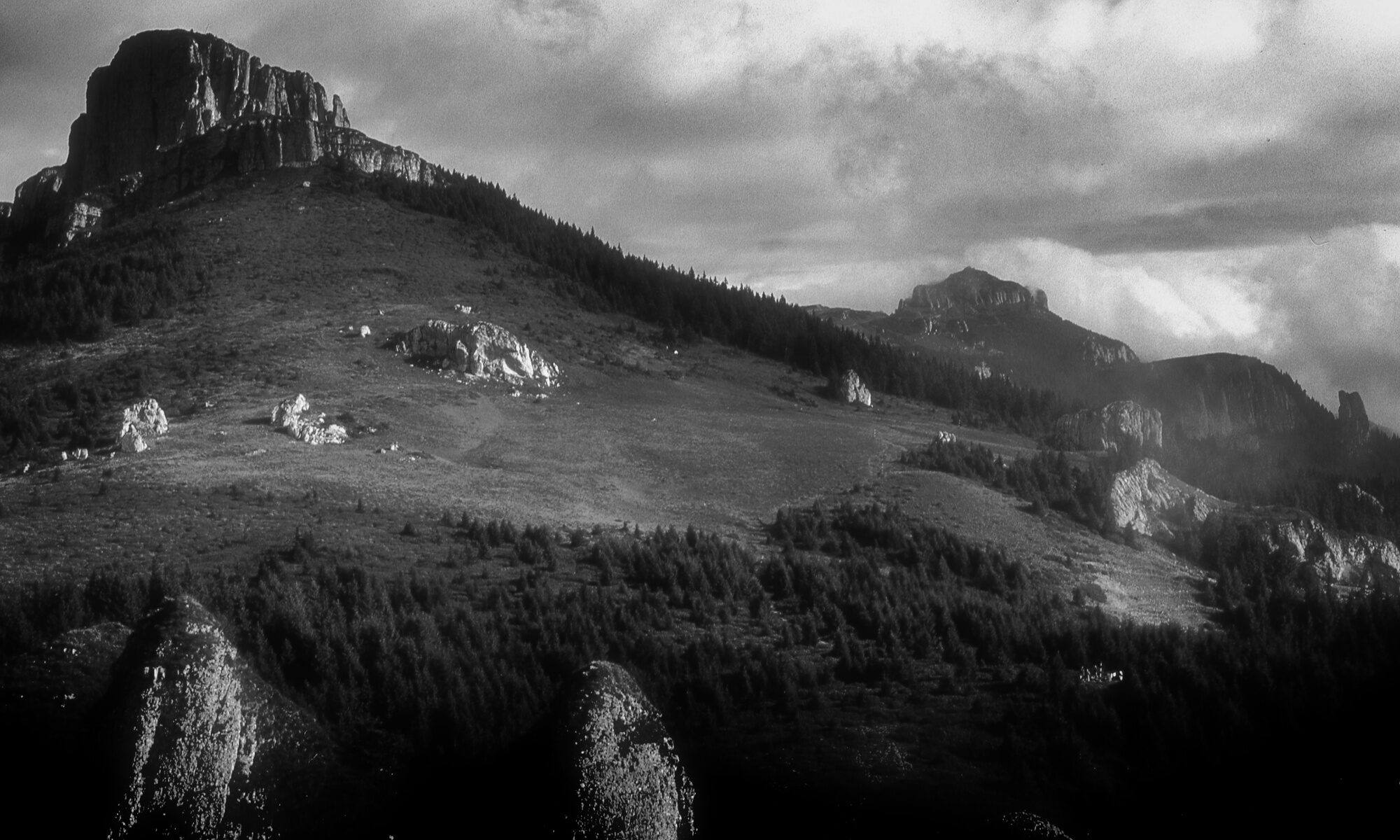THE WHITE-FLECKED MOUNTAINS. These are a wild belt of conglomerate mountains. They stand above the mild waters of the Golden Bistrița River from whose waters you scoop fresh zeal for sheer climbs up mountainsides and green-white mountain gorges. Their peaks, blanketed in green, mossy plains and dark scrub-pine thickets, are beautiful to behold. But most stunning of all are their white cliffs. Not hillsides or slopes, but precipices hundreds of meters high. Around their brinks, edelweiss and mouse-ears reach into the abyss like the hanging gardens of old. But August is not the best month for botanizing in Ceahlău, for the Moldavian sun has singed most of the color out of its plants. As you walk along the brink of a precipice, a raven takes flight beneath your feet. It beats the air with its wings and is suddenly above the abyss, taking with it the whir of its plumage. Many such dark-winged birds soar above the white cliffs.
Toaca Peak, a towering, nearly two-thousand-meter-tall summit, resembles the gleaming crown of “the olden king of Moldavian Carpathia,” as Romanian bards have called the Ceahlău Mountains. We have trekked across them from north to south, and from south to north. They are not as deserted as other Romanian ranges. On folk holidays, people climb all the way up to their myth shrouded plains. We had very little to eat once, the tiny shop at the foot of the mountains was closed. From sacks that stood open before the shop, we scooped rough cornmeal and begged a farmer for some drippings: meat baked in lard, garnished with dead fly larvae. We cooked mamaliga on an open fire, greased it with the fatty, fly-infested residue and disinfected our stomachs in the Eastern fashion: with firewater. Life in the Ceahlău Mountains was good and healthy.
If you are not strong of lung or sure of foot, do not go Ceahlău. The mountains are exceedingly steep from all sides, perhaps the steepest in all of Romania: above the waterfall of Duruitoarea, hikers wept for sheer exhaustion.
